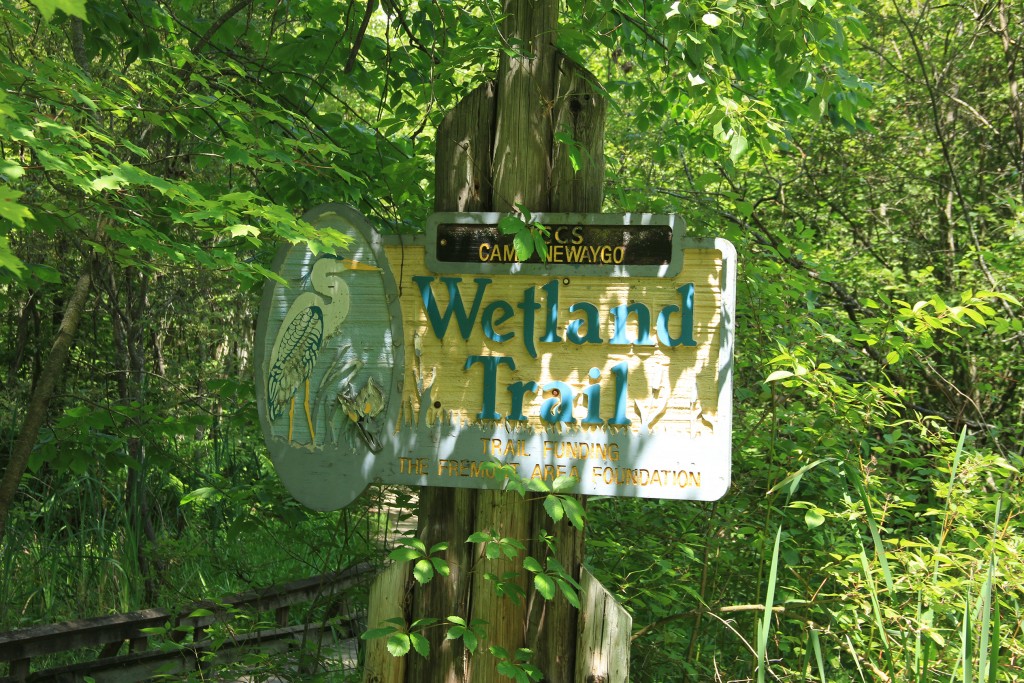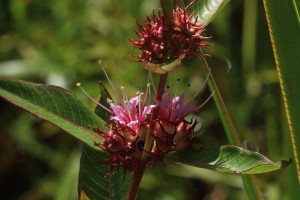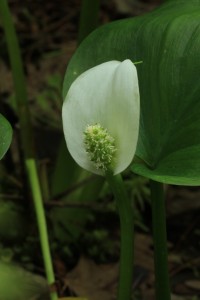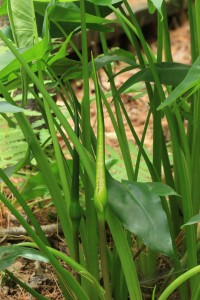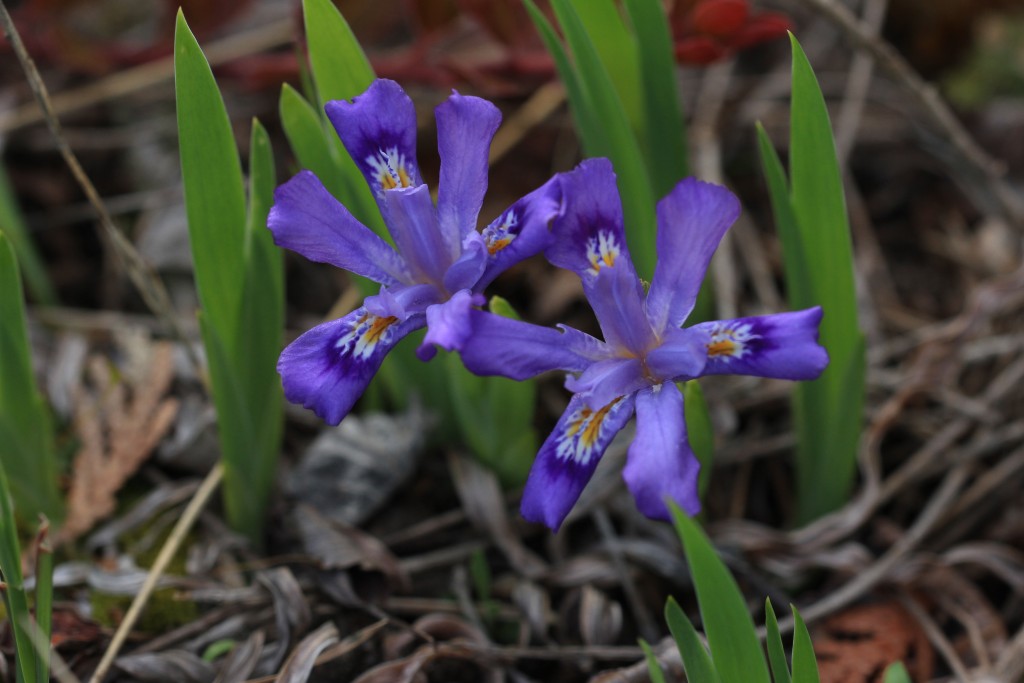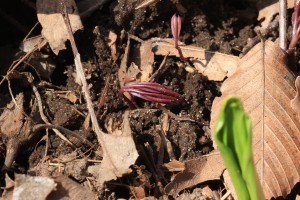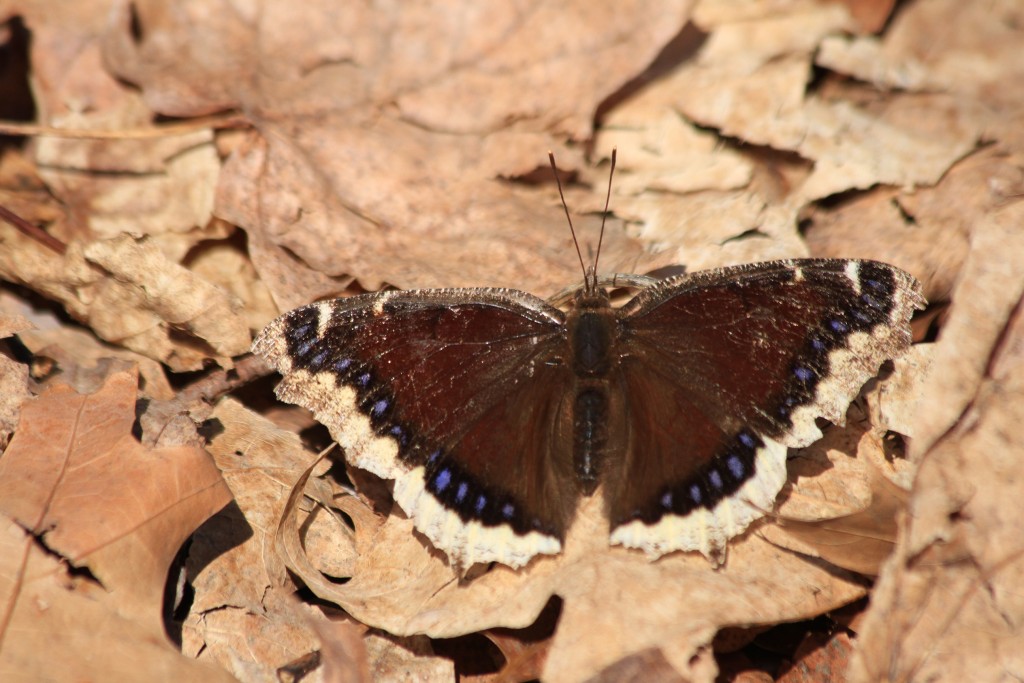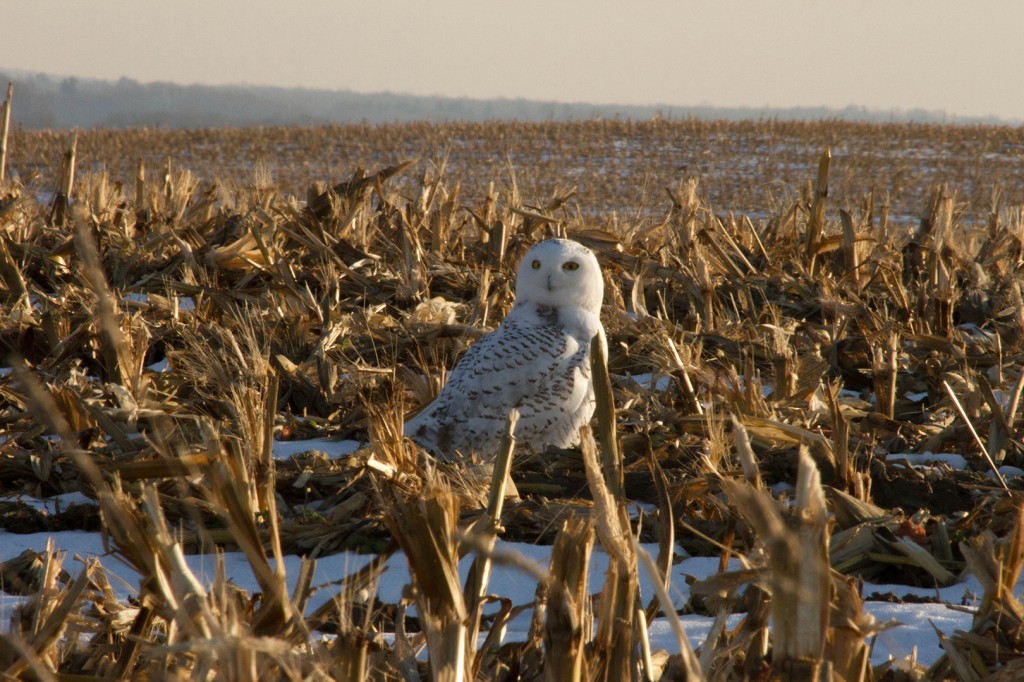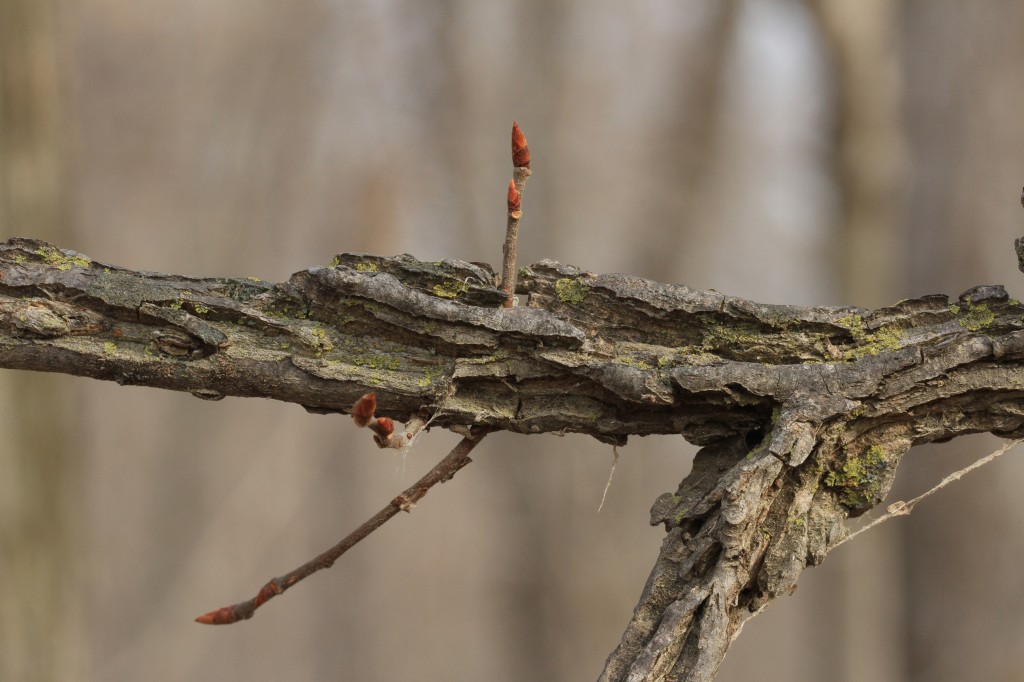
Monarch Larvae
It’s not too early to begin planning your gardens and landscaping for this year. A good, well thought out plant list and design goes a long way towards success in the garden. In this entry I would like to focus on using native plants, especially in the butterfly garden. There are various reasons to use native plants in this situation. Natives provide excellent nectar sources as well as larval host plants. In one case with the Monarch (which I’ll elaborate on later in this piece) planting the wrong non-native species of milkweed has proven detrimental to the butterflies. Native plants not only survive but thrive in some adverse conditions when properly matched to those conditions.
First, you should do a site analysis. Consider the soil type and moisture conditions as well as the amount of light the site receives during the day. Other environmental factors should also be considered. In the case of the butterfly garden at the Gary Byker Memorial library in Hudsonville, we used Michigan species that fit the soil and moisture conditions for this project. Since the site was a former church building and had been filled in with poor fill sand and very little top soil and has an asphalt parking lot on two sides, dry sand prairie plants were used. One species that seems to do well next to hot roads, parking lots or sidewalks is the Orange or Butterfly Milkweed Asclepias tuberosa. As you are matching plants to your site conditions look for those that are from your part of the state, not 200 or 300 miles away and in different cold hardiness zones. Match these factors as well. For instance don’t spec plants that are naturally found in the bottom one or two tiers of counties when you live in the northern lower or upper peninsulas. Also pick from those plants that are known as nectar sources and larval host plants from butterflies in your area. You can get a good idea of what butterflies are possible in your area by consulting the book, Michigan Butterflies and Skippers by Mogens C. Nielsen.
After you have a plant list, you need to decide if you are going grow plants from seed yourself or buy potted plants. Either way there are a couple of good sources to help you find native plants and seeds to purchase. Both the Wildflower Association of Michigan (www.wildflowersmich.org) and the Michigan Native Plant Producers Association (www.mnppa.org) list members that offer plants and seeds for sale.

Tropical Milkweed Asclepias curassavica
One case that shows the importance of being careful of what plants we plant for butterflies has to do with helping the Monarch Butterfly. If you have watched the reports coming out of Mexico the past several years, you know that the overwintering population has dwindled significantly. The counts for the winter of 2013/2014 were the lowest ever recorded. There has been a gradual decline over the past decade or so, but the good news is that this year’s numbers are just short of double for last year. There are several factors contributing to this decline including but possibly not limited to loss of milkweed in Midwest farm fields, wet, cool and stormy spring migration weather and pesticide use. After hearing of this decline many well meaning people started planting milkweed to help, since Monarchs lay their eggs only on milkweeds. The problem that arose was that Tropical Milkweed Asclepias curassavica was all that was readily available at most greenhouses or nurseries. Asclepias curassavica is a neo-tropical species that has naturalized in some southern states but is not native to any part of the United States. A quick search of the internet yields a load of sites promoting this plant as a great butterfly magnet and Monarch host. Grown as a perennial in the south and an annual in the north, Asclepias curassavica blooms later in the later fall and doesn’t die back or shut down like native species. Native Asclepias’ die back in late summer to fall, leaving now place for eggs to be laid. They may also have a chemical change in late summer which is transferred to the feeding larvae and as a result signaling the hatching adults to prepare for and fly south rather than continuing to mate and lay eggs. This change does not occur in the tropical species, instead it provides food for larvae all winter in the south and the adults do not migrate. If you have watched any weather reports this winter you will realize this is not conducive to their survival with the cold freezing temperatures. In a normal winter they would continue the cycle of laying eggs all winter and never migrating, leading to the proliferation of another issue; these plants host a debilitating protozoan parasite. Larvae ingest the parasite and the hatching adult is covered in spores and is much weaker and will not live as long as it’s healthy counterparts. Many will not successfully make the migration even if they attempted to, thus reducing the numbers and disrupting the natural cycle.

Butterfly Milkweed Asclepias tuberosa
There are many native species that are better choices and some are just as colorful and showy. For a complete list of Asclepias’ native to Michigan and where they are found in the state, go to http://michiganflora.net. A few of the more common ones I would recommend starting with are Clasping Milkweed Asclepias amplexicaulis, Swamp Milkweed Asclepias incarnate, Common Milkweed Asclepias syriaca, Butterfly Milkweed Asclepias tuberosa, Whorled Milkweed Asclepias verticillata, and Green Milkweed Asclepias viridiflora. Match these to your conditions and enjoy the beauty and the butterflies they will attract.
Remember, natives are the best!
 Click on the title of a post to view a full gallery of images.
Click on the title of a post to view a full gallery of images.
